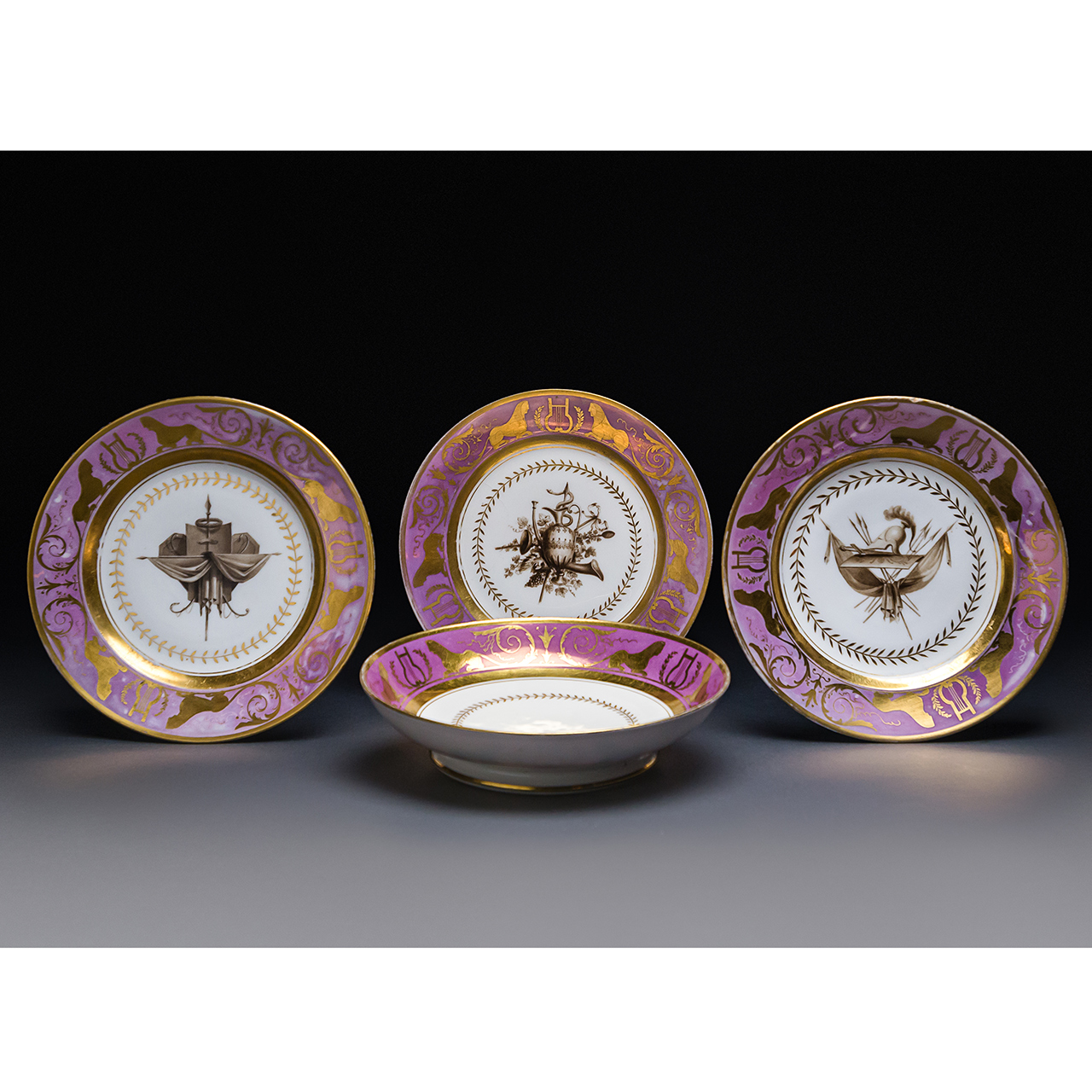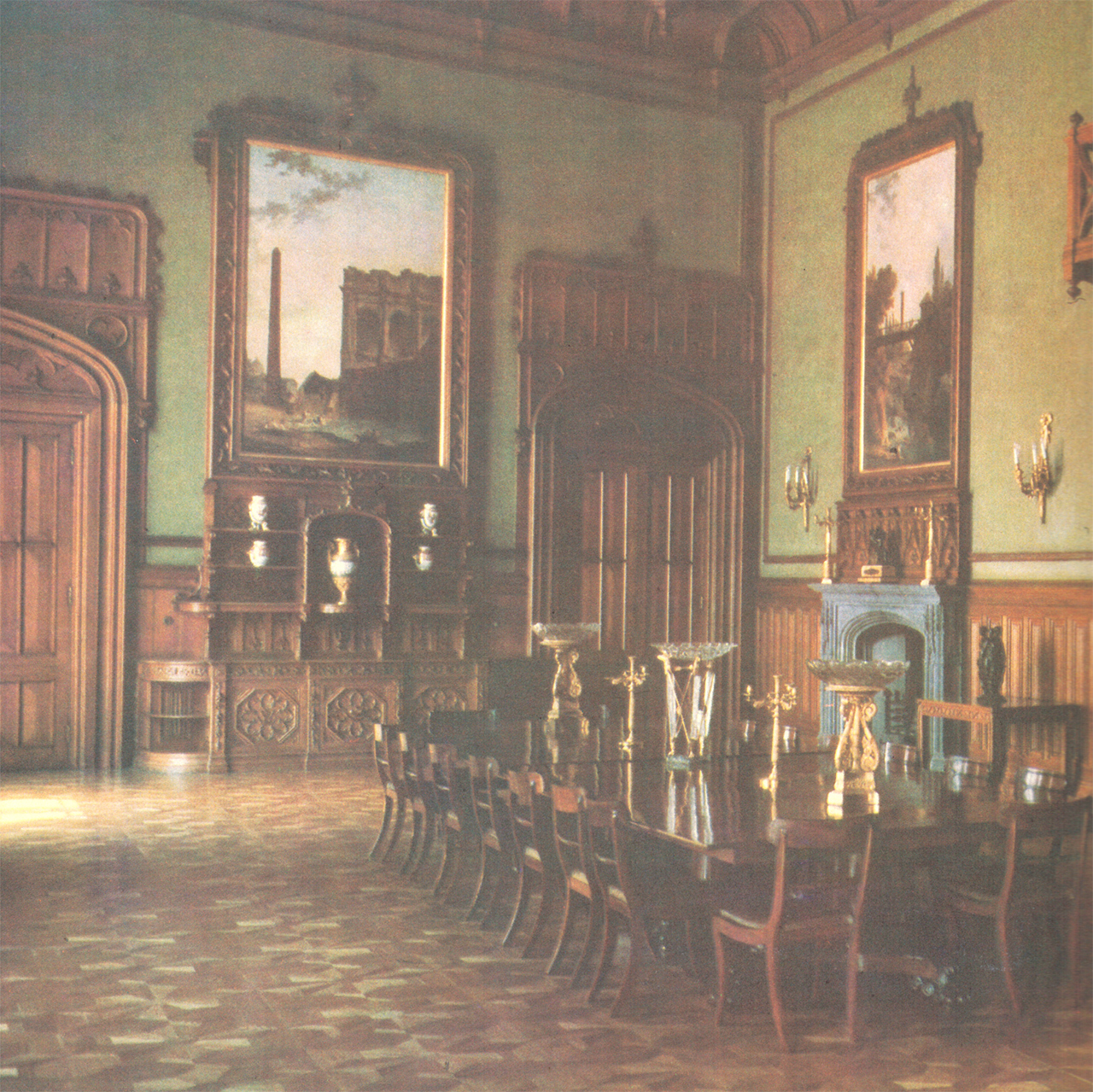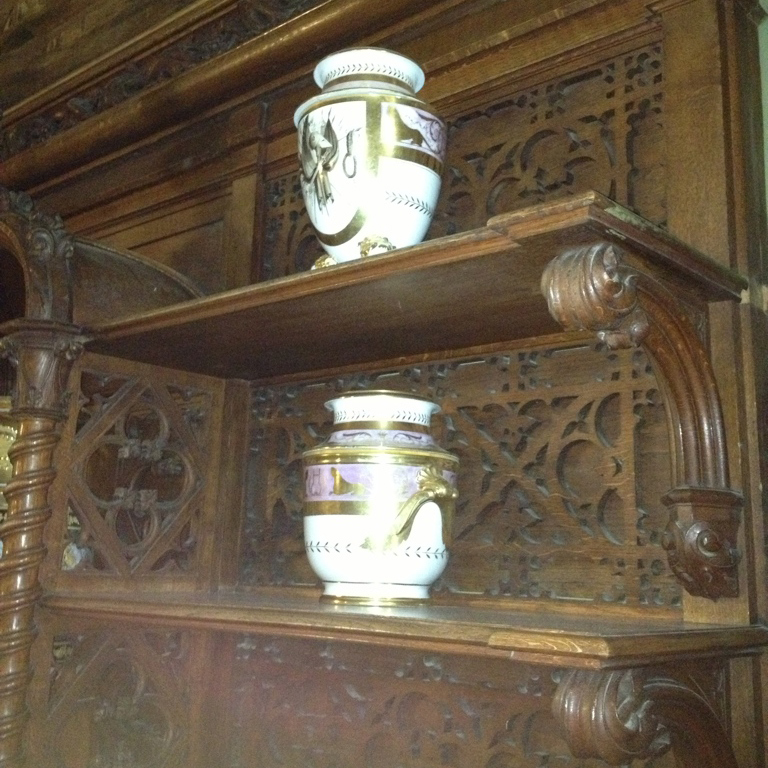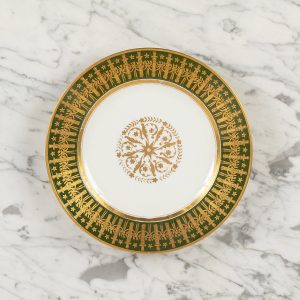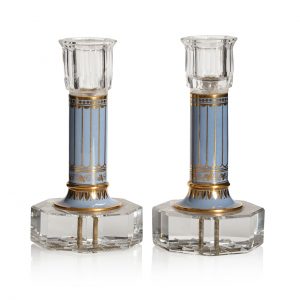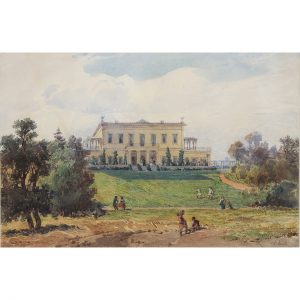Hard-paste porcelain set of three plates and one compotier, ornate at the center with a military trophy of sepia color, surrounded by a gilt laurel leaf crown, the border is alternately decorated with sphinxes, foliages and lyres in gold on a pink ground, bordered with gilt rims.
Wear at the gilding, the compotier has a crack.
Dagoty porcelain factory, Paris, circa 1810-1820.
Red stamp mark in red “Manufacture de DAGOTY, boulevard de Poissonnière, à PARIS” (1798-1816).
D. 22 cm.
Prince Mikhail Semyonovich Vorontsov (1782-1856).
From a dessert service commissioned by the Prince, later placed in his summer residence at Aloupka (Crimea), the famous Vorontsov Palace, built between 1830 and 1848 and owned by the Vorontsov family until the Revolution.
The palace museum currently holds a pair of bottle buckets and a pair of ice buckets from this service, where each piece presents a different military trophy. They may own other pieces from this service, but not exhibited.
General Vorontsov participated in the Napoleonic Wars, as in Friedland, Borodino or during the occupation in France from 1815 to 1818, and was certainly influenced by the Empire-style art of which we find several motifs on our plate,aAnd by the manufactures like Dagoty, which supplied both the Courts of Napoleon I and Alexander I.
The Dagoty factory received the patronage of the Empress Joséphine in 1804, and became famous for the quality of its decorations and for its sponsors, including the Court of Russia, which enabled it to realize important profits very early, making it possible to employ a hundred workmen in the rue de Chevreuse and in his elegant boutique boulevard Poissonniere in Paris.


